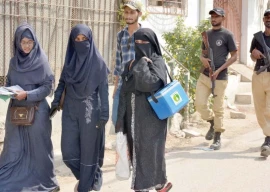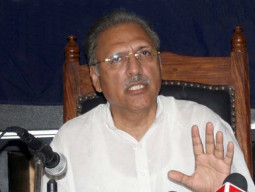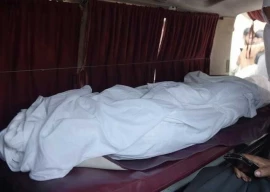
“There is no shortage of land or money,” clarifies Tasneem Siddiqui, whose policy brief on Pakistan’s urbanisation has just been released by the Woodrow Wilson Center. It’s just that 68% of Pakistan - the sanitation workers, teachers, electricians, who earn between Rs8,000 and Rs30,000 - are so far down the food chain that they can’t dream of owning a house.

Siddiqui is better known as the bureaucrat who designed Khuda ki Basti, a famous 1986 housing project in Hyderabad for the urban poor that imitated the way illegal squatters build their neighbourhoods. His policy brief outlines ways the government can help and analyses why the system is so skewed.
In Pakistan powerful interest groups (public and private) have been acquiring land in large towns and creating sprawl for people with cars. In Karachi, for example, Siddiqui says, density (people per square kilometre) should go up. But we have it ‘upside down’. “People with cars should be living on the outskirts of the city but instead we have the ghareeb living there,” he says, citing Landhi, Korangi, New Karachi.
In 66 years, governments have launched schemes for the poor but the end product either did not reach the target groups or stay effective. The red tape was horrific and the delays in laying infrastructure were long. “The poor did not have the luxury of waiting,” the policy brief says. It didn’t help that these projects did not have inbuilt schools or healthcare. Siddiqui says, for instance, you must plan 10 shops for every 100 houses because people need to buy anda-dabalroti or daily groceries.
The focus has not been the poor. Over the last 30 years the public sector has not been working in low-income housing. “The government is foolish, careless and stupid,” he says. “People have to live somewhere.” The private sector has eyed the middle- and higher-income people. And naturally there is going to be a shortage of affordable housing as more and more people are turning towards Pakistan’s cities. If you take Karachi’s population at 18 million and say it is growing at 2%, says Siddiqui, even that figure comes to 360,000 more people a year.

Karachi’s problem has been the organisation of authority. “Entities such as the Malir Development Authority should be placed under the city government and not the Sindh government,” he adds. But the way it works is that at one point there were four ministers for housing and the CM’s housing cell. It is also a matter of policy and coordination. In Chile, Latin America, the local government, federal government, professional bodies and church all get together to make social housing and ensure it goes into the right hands.
Siddiqui is often asked how the government can guarantee the wrong people don’t buy these cheap, small plots if it sets them aside for low-income housing. His experience has taught him solutions and lessons. Vetting the client is important. You keep the plot sizes small (80sq yards) to ensure the middle class won’t be attracted. You keep the lanes narrow. You charge or fine or confiscate if plots are bought up and stay vacant. You incrementally bring in utilities and services. “The land mafia doesn’t interfere [when you have this formula],” he says. “The man [who] lives there, sells it to his own type.”
And the poor are more than willing to pay. The idea is that they dedicate 20% of their income even if it is Rs10,000 a month to slowly buying the land in instalments. And for those who cite the example of the Housing Building Finance Corporation, Siddiqui says that it helps people with houses but the poor can’t even buy the land to begin with.
Instead, he likes the idea of a Hajj scheme formula. Get young professionals to start putting money away each year, dedicate land and when their number comes up at the end of 20 years, let them possess the plot. He gives the example of London’s council housing for working class people. Singapore started its public housing in 1960 and people just use their provident fund to eventually buy the flats. There are almost no homeless in the city state.
In Pakistan, the rich buy land as investment but keep it vacant, a form of speculation. At one time, 300,000 plots were vacant in Sindh alone while 40% of the population was living in katchi abadis. “You have eight cantonments,” Siddiqui says of Karachi. “The state could have bought cantonment land. There is easily 2,000 acres that could be made available.”
Other prescriptions include limiting plots to 400 sq yards and heavily taxing those who want more. Think of the 3,000 sq yard homes on Khayaban-e-Hafiz - they could accommodate three times the plots for the poor. Zoning by-laws should be changed to allow densities of 1,500 people per acre. Public limited construction companies or foundations for social housing should be formed in each province with the city governments and banks and leasing companies to give mortgage loans for target groups. The Sindh Disposal of Urban Land Ordinance 1999 which promoted small plot development schemes should be given permanent legal cover.
Siddiqui is candid about using his 40 years in government service, starting with the experience as the director-general of the Hyderabad Development Authority and numerous other top posts, including chief secretary, to push through these projects. He makes a vehement confession: “I abused my power and authority to build [the scheme],” he says referring to Khuda ki Basti. He knew the system. He was able to get his work done cheaper because he didn’t need to pay the usual bribes builders have to. He pulled in favours, he tackled the land grabbers. But at the end of the day NGOs can’t entirely shoulder the burden of the state.
Published in The Express Tribune, January 27th, 2014.
COMMENTS (4)
Comments are moderated and generally will be posted if they are on-topic and not abusive.
For more information, please see our Comments FAQ

















Over the last 30 years we have been busy with jihad-for-dollars, creating a military-dominated state. Consequently defence housing authorities have flourished, while low-income housing is a phrase we have deleted from the State of Pakistan's official dictionary.
An scholarly article by ET addressing a major problem the poor masses are facing in our country. There are several suggestions and examples are provided if the rulers are listening. It is a shame that we are a nuclear power with a couple of hundred warheads but majority of our population cannot even dream of owning a tiny home.
@Parvez: That's a good point you make. Keep in mind, the rich Pakistanis did not do much to earn their riches. The land owners connived with the British (yes, that is how they got the land allotted to themselves at least their grandfathers ). The industrialists either did not pay taxes or they mis-represented their assets if they came over from pre-partition India. Others such as bureaucrats accepted bribes or embezzled government funds as did the army generals.
So, who really created a new idea or a new technology to really earn their riches ? No one. That is why the rich have no interest or concern about the poor of Pakistan.
What the rich just don't seem to understand, because they don't want to understand, is that reducing the disparity between the rich and the poor works not just in the interest of the poor but more so in the interest of ensuring that the rich remain where they are..............but that is long term thinking and the rich are just not capable of that. At least not just yet.